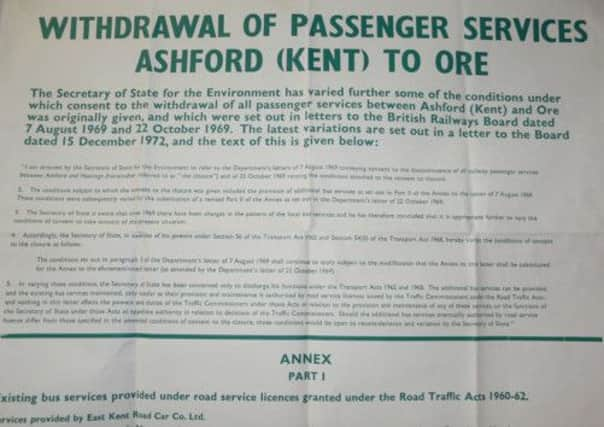How the Rye railway lineescaped Dr Beeching’s axe


It is half a century since Beeching’s axe fell on branch lines across the country, decimating our rail network.
The Rye line was cited to be scrapped but The Rye Member of Parliament of the time, Bryant Godman Irvine, made an impassioned speech in Parliament against the closure.
Advertisement
Hide AdAdvertisement
Hide AdThe Ashford to Hastings Users Association, arguably the forerunner of the MarshLink Action Group, was formed to combat the closure: the Winchelsea and District Travel Association joined in the fray (as does the Three Oaks and Winchelsea Action for Rail Transport (“THWART”) nowadays).
In his speech, the Honourable Member for Rye referred to: the inadequacy of the roads (including the Folkestone to Honiton A259 trunk road) in the South East, particularly the tight bends; the inability of holidaymakers to get to the area without the rail service; the children that rely on the train to get to their school; and, though not true today, the profitability of freight traffic had not been included in the calculations.
Stuart Harland, chairman of Rye rail action group Marshlink, said: “All these arguments sound very familiar as those put forward by MLAG at various times for improvements to the service, two of them very recently before the blockade of the line, due to work being carried out on the Ore Tunnel.
“By 1969, matters had deteriorated further and the line was confirmed for closure, subject to a replacement bus service being established.
Advertisement
Hide AdAdvertisement
Hide Ad“ Public pressure continued with placards featuring slogans such as “Let’s go to work on a train”; “Stop lies not trains”; and “We want our trains.”
“Somehow, a two year deferment was granted but (and I’m sure all the users of the bus replacement service last year could have told them) it was eventually determined that a bus service could not be operated safely and successfully. So the MarshLink line was saved but the second track was removed (hence the continuing issues MLAG has trying to re-instate the dualled track); manned crossings were made automatic; and stations were deprived of staff. But, we were left with some track and some stations to work from and try to improve.